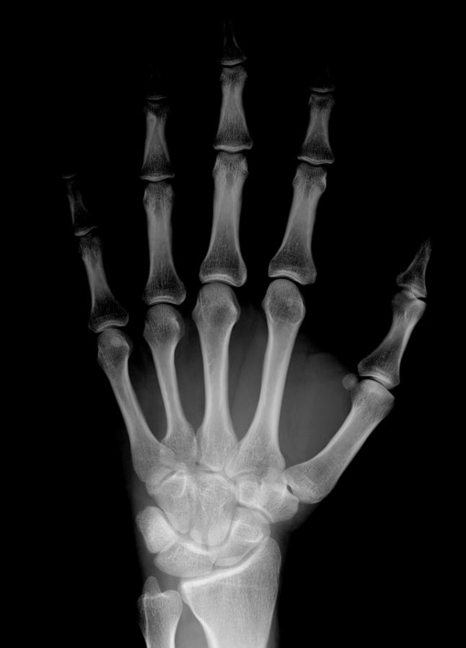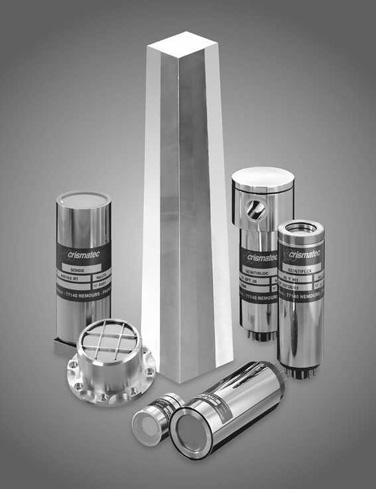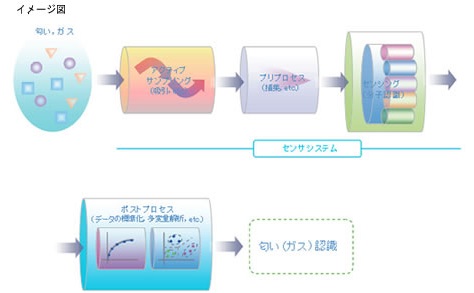In our laboratory, we are conducting research on the development and application of phosphor materials made of glass and crystals for the purpose of radiation measurement. In general, such phosphor materials are applied to medical imaging technologies such as roentgen photography, CT and PET, security used in airports, environmental radiation monitoring, astrophysics, and nuclear science. Our research topics are introduced below.
本研究室では、、放射線計測を目的としたガラスや結晶などからなる蛍光体材料の開発およびその応用について研究を行っています。一般的に、このような蛍光体材料はレントゲン写真、CT、PETなどの医療イメージング技術、空港などで用いられるセキュリティ、環境放射線モニタリング、宇宙物理学、核科学などに応用されます。以下に、具体的な研究内容について紹介します。
Storage Phosphors / 蓄積蛍光体(放射線センサ)
 Phosphor materials are often used to record radiation dose. When radiation hits the phosphor, energy is stored, and the stored energy is emitted as light by an external stimulation. Since the amount (intensity) of light emitted at this time is proportional to the stored energy, that is, the absorbed radiation energy, the amount of radiation exposed can be indirectly measured. Here, there are two types of external stimulation. Light emission by thermal stimulation is called thermally stimulated luminescence (TSL) (also called thermoluminescence), and emission by light stimulation is called optically-stimulated luminescence (OSL) (or photo-stimulated luminescence (PSL)). On the other hand, a phenomenon called radiophotoluminescence (RPL) is also used for exposure dose measurement and is classified as a storage luminescence. RPL is a phenomenon in which a new emission center is generated by radiation (ionization). That is, it is a phosphor that does not shine before it is exposed to radiation, but shines after it is exposed to radiation. Since the emission intensity is proportional to the radiation dose, the integrated exposure dose can be measured. In our laboratory, we are working on searching for new materials with better properties than conventional stored phosphors and understanding the mechanism. In particular, RPL is a relatively new phenomenon, and not many materials that indicate RPL are recognized. Therefore, we are also focusing on searching for new RPL materials and developing new applications.
Phosphor materials are often used to record radiation dose. When radiation hits the phosphor, energy is stored, and the stored energy is emitted as light by an external stimulation. Since the amount (intensity) of light emitted at this time is proportional to the stored energy, that is, the absorbed radiation energy, the amount of radiation exposed can be indirectly measured. Here, there are two types of external stimulation. Light emission by thermal stimulation is called thermally stimulated luminescence (TSL) (also called thermoluminescence), and emission by light stimulation is called optically-stimulated luminescence (OSL) (or photo-stimulated luminescence (PSL)). On the other hand, a phenomenon called radiophotoluminescence (RPL) is also used for exposure dose measurement and is classified as a storage luminescence. RPL is a phenomenon in which a new emission center is generated by radiation (ionization). That is, it is a phosphor that does not shine before it is exposed to radiation, but shines after it is exposed to radiation. Since the emission intensity is proportional to the radiation dose, the integrated exposure dose can be measured. In our laboratory, we are working on searching for new materials with better properties than conventional stored phosphors and understanding the mechanism. In particular, RPL is a relatively new phenomenon, and not many materials that indicate RPL are recognized. Therefore, we are also focusing on searching for new RPL materials and developing new applications.
 放射線の線量を記録する為には蛍光体が頻繁に使われます。放射線が蛍光体材料に当るとエネルギーが蓄積され、蓄積されたエネルギーは外部的な刺激(トリガ)により光として放出されます。この時放出される光の量(強さ)は蓄積されたエネルギー、即ち吸収された放射線エネルギーに比例する為、被ばくした放射線量を計測する事ができます。ここで、外部的な刺激は2種類あり、熱刺激による発光を熱刺激発光(熱蛍光や熱ルミネッセンスなどとも呼ばれる)と呼び、光刺激による発光を輝尽蛍光と呼ばれます。 一方で、ラジオフォトルミネッセンス(RPL)という現象も被ばく線量計測に用いられ、蓄積蛍光体として分類されます。RPLとは、放射線(電離作用)により新しい発光中心が生成される現象の事を指します。即ち、放射線があたる前は光らないが、放射線があたった後は光るようになる蛍光体です。その発光強度は放射線量に比例するので、積算された被ばく線量を計測する事ができます。本研究室では、従来の蓄積蛍光体よりもより良い特性を有する新規材料の探索やメカニズムの理解に取り組んでいます。特にRPLは比較的新しく認知された現象であり、RPLを示す材料はあまり多く認識されていません。その為、新規RPL材料の探索や新規応用の開拓にも力を入れています。
放射線の線量を記録する為には蛍光体が頻繁に使われます。放射線が蛍光体材料に当るとエネルギーが蓄積され、蓄積されたエネルギーは外部的な刺激(トリガ)により光として放出されます。この時放出される光の量(強さ)は蓄積されたエネルギー、即ち吸収された放射線エネルギーに比例する為、被ばくした放射線量を計測する事ができます。ここで、外部的な刺激は2種類あり、熱刺激による発光を熱刺激発光(熱蛍光や熱ルミネッセンスなどとも呼ばれる)と呼び、光刺激による発光を輝尽蛍光と呼ばれます。 一方で、ラジオフォトルミネッセンス(RPL)という現象も被ばく線量計測に用いられ、蓄積蛍光体として分類されます。RPLとは、放射線(電離作用)により新しい発光中心が生成される現象の事を指します。即ち、放射線があたる前は光らないが、放射線があたった後は光るようになる蛍光体です。その発光強度は放射線量に比例するので、積算された被ばく線量を計測する事ができます。本研究室では、従来の蓄積蛍光体よりもより良い特性を有する新規材料の探索やメカニズムの理解に取り組んでいます。特にRPLは比較的新しく認知された現象であり、RPLを示す材料はあまり多く認識されていません。その為、新規RPL材料の探索や新規応用の開拓にも力を入れています。
Scintillators / シンチレータ(放射線センサ)
 A scintillator is a phosphor that instantly converts incident radiation into light (ultraviolet, visible, and near-infrared light). Therefore, the scintillator is suitable for real-time measurement of radiation than storage phosphors, and it is possible to measure the energy spectrum of radiation and discriminate line types by using a pulse height spectrum technology. Scintillators with such characteristics are in high commercial and industrial demand, and are especially used in medical diagnostic imaging equipment such as CT and PET, and are expected to develop into further applications. In our laboratory, we are searching for new scintillator materials with better properties and conducting research to deepen our understanding of the quantum conversion process (radiation → light) as a scintillator.
A scintillator is a phosphor that instantly converts incident radiation into light (ultraviolet, visible, and near-infrared light). Therefore, the scintillator is suitable for real-time measurement of radiation than storage phosphors, and it is possible to measure the energy spectrum of radiation and discriminate line types by using a pulse height spectrum technology. Scintillators with such characteristics are in high commercial and industrial demand, and are especially used in medical diagnostic imaging equipment such as CT and PET, and are expected to develop into further applications. In our laboratory, we are searching for new scintillator materials with better properties and conducting research to deepen our understanding of the quantum conversion process (radiation → light) as a scintillator.
シンチレータとは入射する放射線を即座に光(紫外、可視および近赤外光)に変換する蛍光体を指します。そのため、蓄積蛍光体に対してシンチレータは放射線のリアルタイム計測に適しており、特殊な技術を用いる事により放射線のエネルギースペクトルの計測や線種弁別を行う事ができます。このような特徴を持つシンチレータは商工業的需要が高く、特にCTやPETなどの医療画像診断機器などに用いられており、更なる応用への発展に期待されています。本研究室ではより良い特性を有する新規シンチレータ材料の探索や、シンチレータとしての量子変換過程(放射線→光)の理解を深める為の研究を行っています。
Odor (Gas) Sensors / においセンサ(ガスセンサ)
 The development of measurement technology equivalent to human taste and smell is the non-invasion of preliminary diseases caused by odors in the food industry, where ensuring food safety is important in recent years, and in the medical and welfare fields. It is attracting attention from various fields, including fields that have relied on sensory tests, such as the application of taste sensors to medical diagnosis and drug development. However, the development of odor and taste sensors is mostly based on the development of various types of sensors, such as those based on a biomimetic approach, compared to the development of sensors equivalent to other sensory organs such as vision. Is still in the research stage. In this research, we combine sensors with different sensitivities and selectivity, and construct a sensor system that recognizes based on the pattern recognition of the response output, search for conventional sensor element materials, and also from the signal processing aspect, sensitivity and selectivity. We are promoting the practical application of odor sensors.
The development of measurement technology equivalent to human taste and smell is the non-invasion of preliminary diseases caused by odors in the food industry, where ensuring food safety is important in recent years, and in the medical and welfare fields. It is attracting attention from various fields, including fields that have relied on sensory tests, such as the application of taste sensors to medical diagnosis and drug development. However, the development of odor and taste sensors is mostly based on the development of various types of sensors, such as those based on a biomimetic approach, compared to the development of sensors equivalent to other sensory organs such as vision. Is still in the research stage. In this research, we combine sensors with different sensitivities and selectivity, and construct a sensor system that recognizes based on the pattern recognition of the response output, search for conventional sensor element materials, and also from the signal processing aspect, sensitivity and selectivity. We are promoting the practical application of odor sensors.
人間の味覚、嗅覚に相当する計測技術の開発は、近年の食品の安全性確保が重要視される食品産業における品質・工程管理や、医療・福祉分野での匂いによる予備的な疾病の非侵襲的診断、また医薬品開発への味センサの応用など、官能試験に依存してきた分野をはじめとして、多方面から注目を浴びています。しかし、匂い及び味センサの開発は、視覚等、他の感覚器に相当するセンサ開発と比較して、生体模倣的アプローチに基づいたものなど、様々な方式のセンサが開発されているものの大部分は未だ研究段階にあります。本研究では、異なる感度、選択性を有するセンサを組み合わせ、応答出力のパターン認識に基づいて認識するセンサシステムの構築や従来のセンサ素子材料の探索のみならず信号処理的側面から、感度、選択性の向上を行い、匂いセンサの実用化を進めています。
